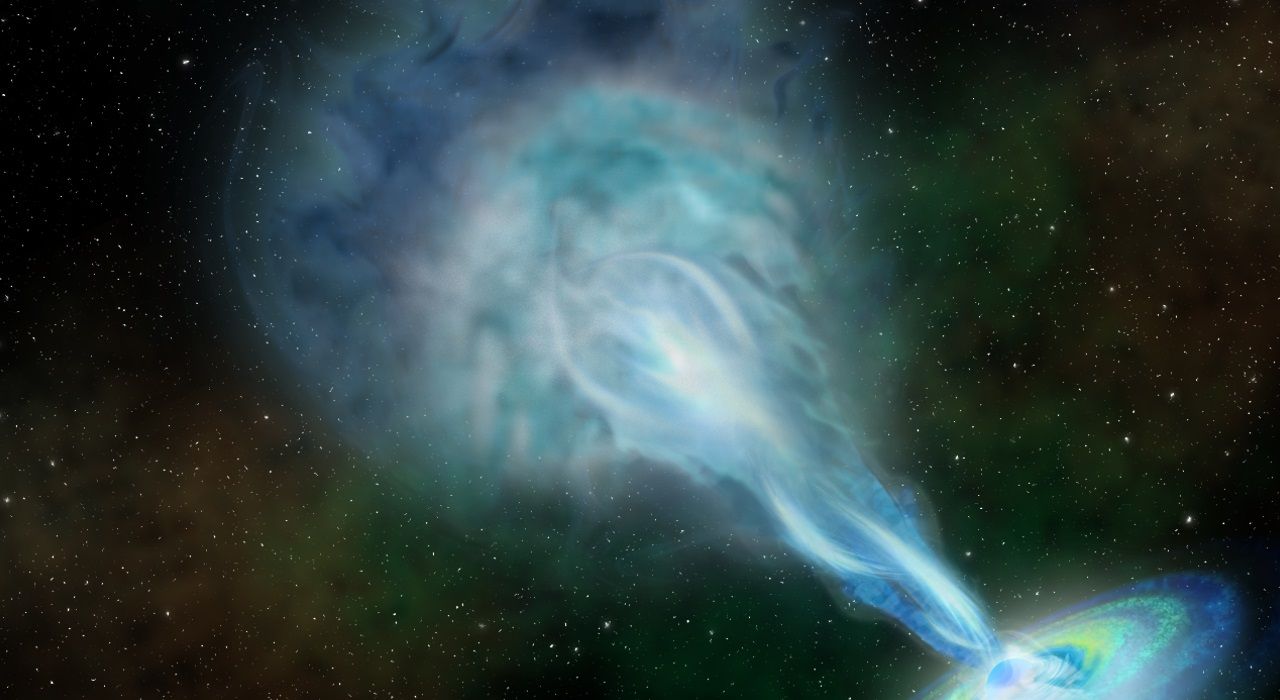
A galaxy spinning around a hungry supermassive black hole that's guzzling down matter and shooting out plasma jets has grabbed the attention of astronomers 13 billion light-years away. This plasma-spewing quasar is spurting out brighter radio emissions than anything else ever observed in the early universe.
The brilliant celestial object could help scientists unlock the secrets of the universe's very first galaxies. Astronomers tracked the mysterious quasar using the National Science Foundation's Very Long Baseline Array. They detailed their findings in two papers published Monday in The Astrophysical Journal and The Astrophysical Journal Letters.
"There is a dearth of known strong radio emitters from the universe's youth," study author Eduardo Bañados from the Carnegie Institute for Science said in a statement. This quasar, he added, was brighter than any other object spotted in the early universe "by a factor of 10."
This incredible brightness allowed astronomers to get a great look at the quasar, which is called PSO J352.4034-15.3373, or P352-15 for short. "This is the most-detailed image yet of such a bright galaxy at this great distance," study author Emmanuel Momjian from the National Radio Astronomy Observatory added in the statement.
Although astronomers are sure they've spotted a quasar, they don't know exactly which elements they've picked up in their image. Three components jump out of the shot (below), and scientists believe these correspond to one of two options.

A patch of light on one side of the image might be the heart, with the other two smudges revealing a shooting plasma jet. Or the bright patch in the middle is the quasar core and the other lights indicate jets bursting out from either side. Researchers believe the first option—a one-sided jet—is more likely.
If they've spotted a one-sided jet, astronomers can track the object over several years to work out how fast it's expanding. If the middle object is the core it could be very young, or shrouded in gas that's suffocating jet expansion.
The astronomers will have to make more observations before can say exactly what's happening. This task, the National Radio Astronomy Observatory's Chris Carilli said in the statement, is an exciting prospect.
"This quasar's brightness and its great distance make it a unique tool to study the conditions and processes that prevailed in the first galaxies in the universe," he said. "We look forward to unraveling more of its mysteries."
The National Radio Astronomy Observatory did not immediately respond to a request for comment.
Uncommon Knowledge
Newsweek is committed to challenging conventional wisdom and finding connections in the search for common ground.
Newsweek is committed to challenging conventional wisdom and finding connections in the search for common ground.
About the writer
Katherine Hignett is a reporter based in London. She currently covers current affairs, health and science. Prior to joining Newsweek ... Read more
To read how Newsweek uses AI as a newsroom tool, Click here.








